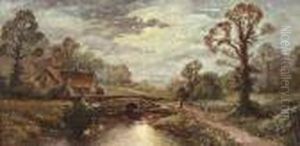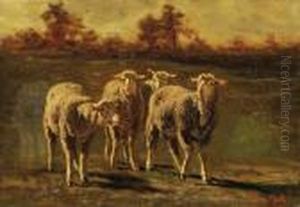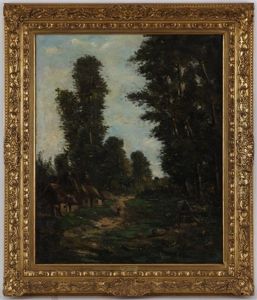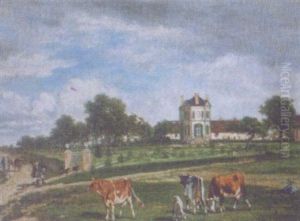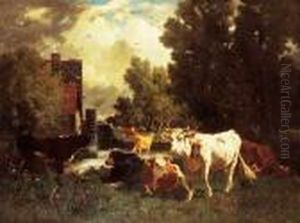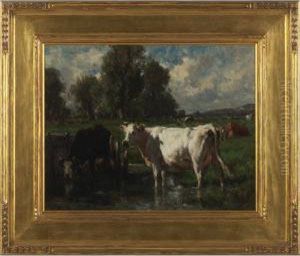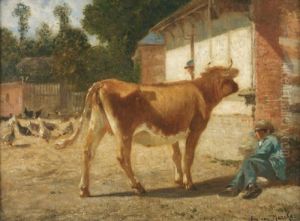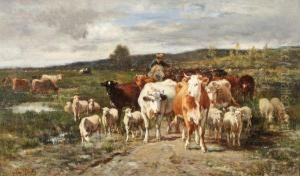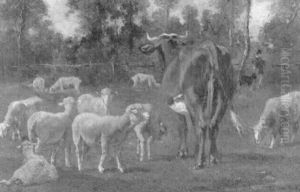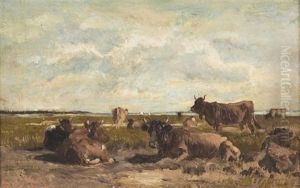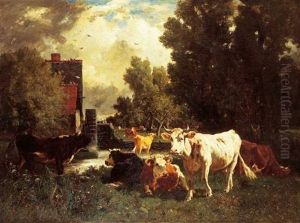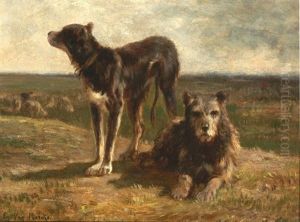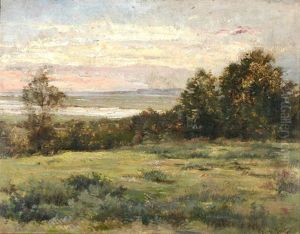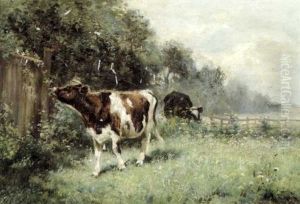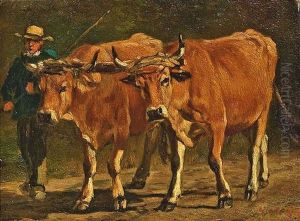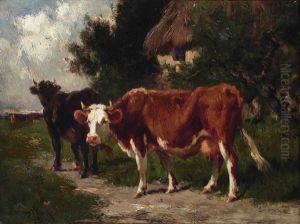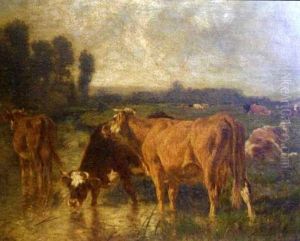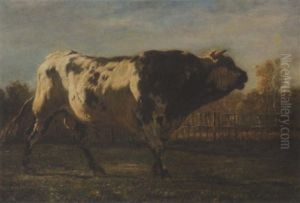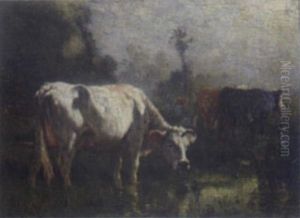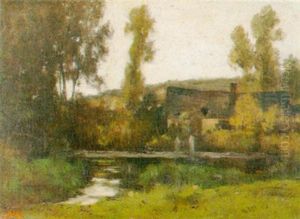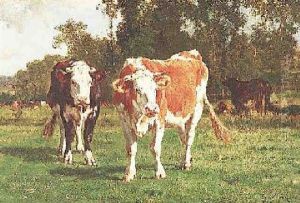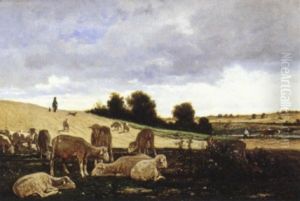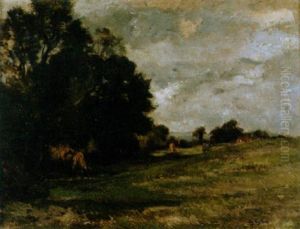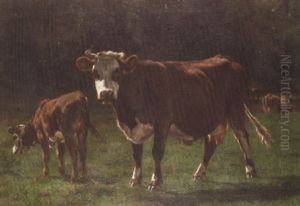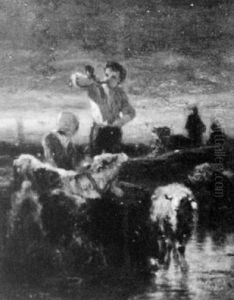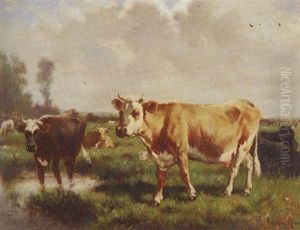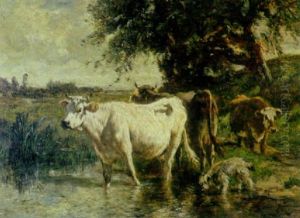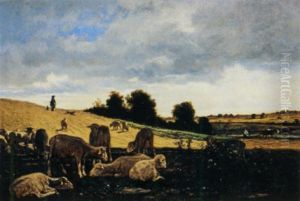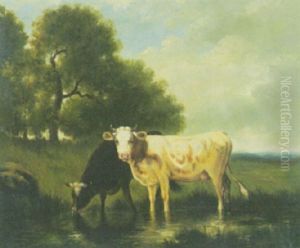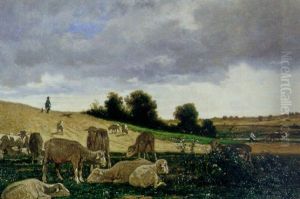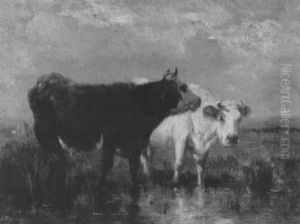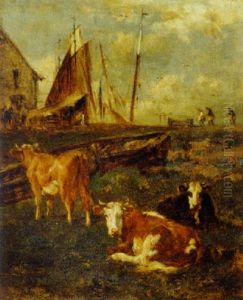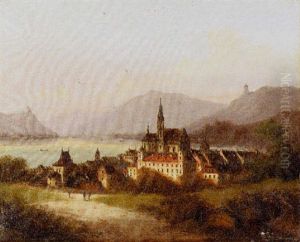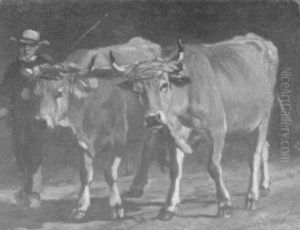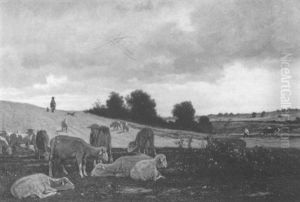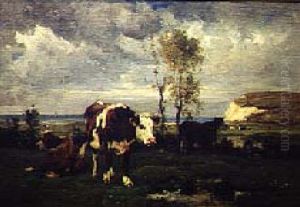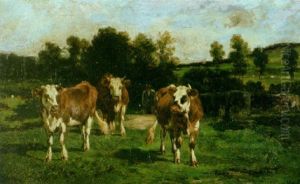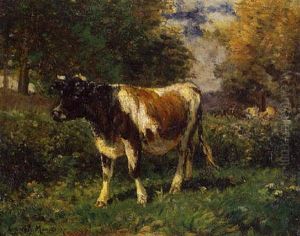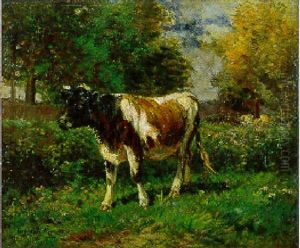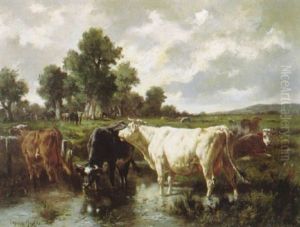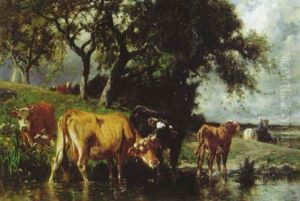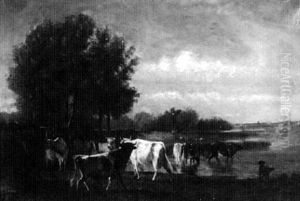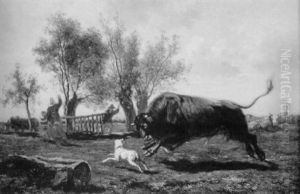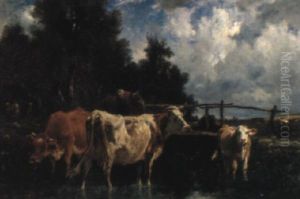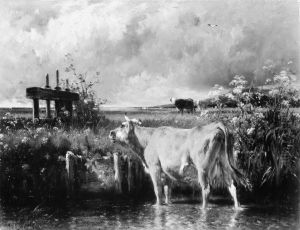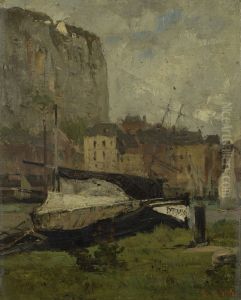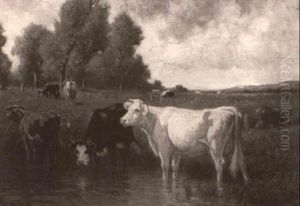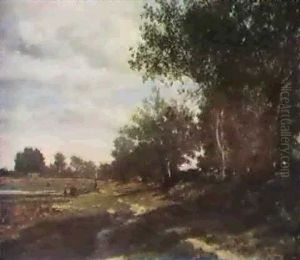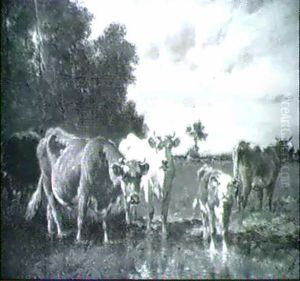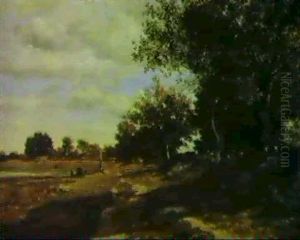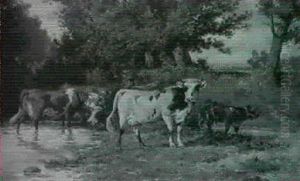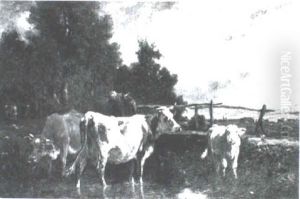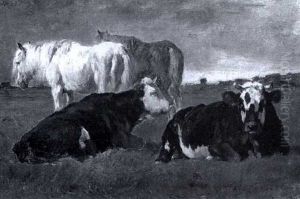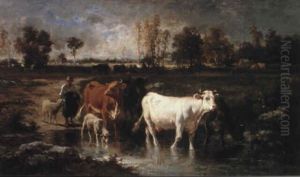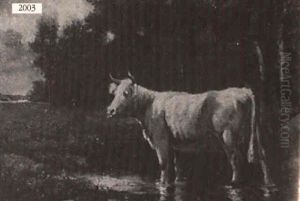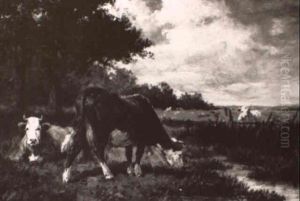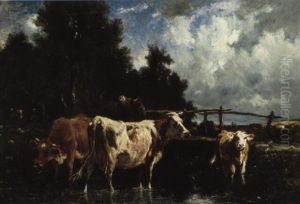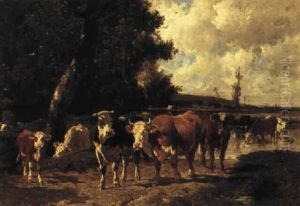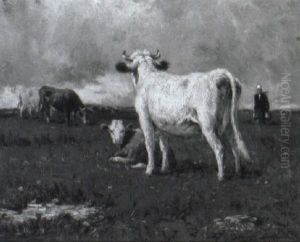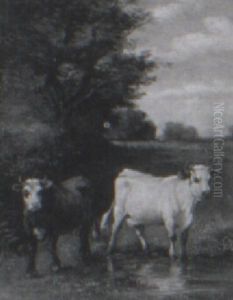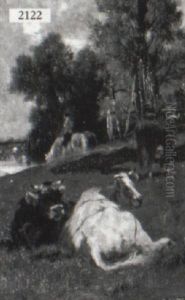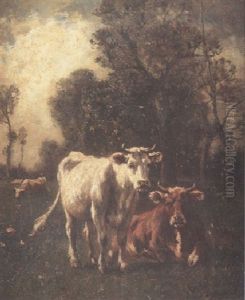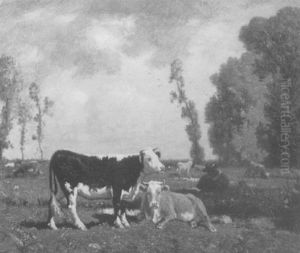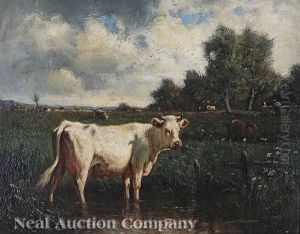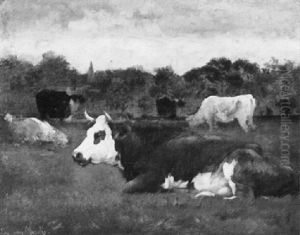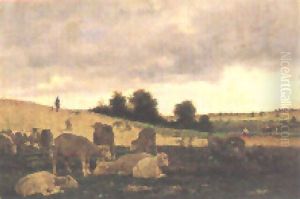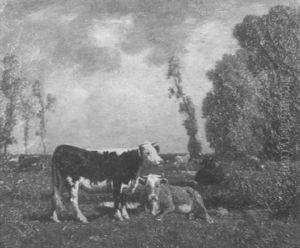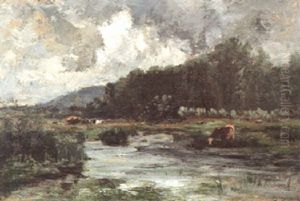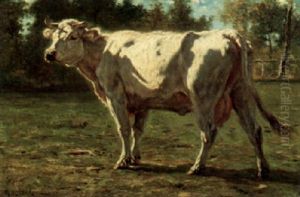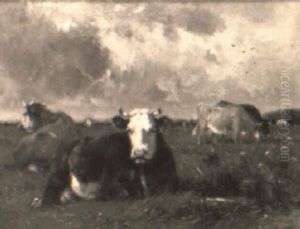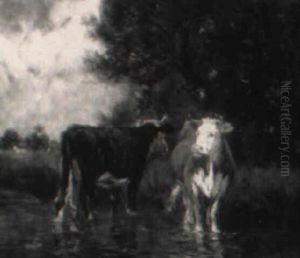Emile Van Marcke De Lumman Paintings
Émile van Marcke de Lummen, also known as Émile van Marcke, was a French artist born on August 30, 1827, in Sèvres, a commune in the southwestern suburbs of Paris. He is best known for his pastoral landscapes and his realistic depictions of cattle, a subject that would dominate his artistic career.
Van Marcke's talent for art was evident early on, and he was initially trained by his father, who was a porcelain painter. This early influence would have a lasting impact on Émile's sense of color and composition. He later studied under the renowned animal painter Troyon, which significantly shaped his style and subject matter. Troyon was a member of the Barbizon School, a group of artists who eschewed the formalities of the studio for painting in nature, and his influence on van Marcke was profound.
In 1867, Émile van Marcke began exhibiting his work at the Paris Salon, the official art exhibition of the Académie des Beaux-Arts in Paris. His depictions of cattle within idyllic and natural settings were particularly well received, earning him considerable acclaim. Van Marcke's work was characterized by its attention to detail, the serene mood of his landscapes, and his ability to capture the gentle nature of his bovine subjects.
Van Marcke's success allowed him to purchase a farm in the Normandy region where he could study and paint his subjects in their natural environment. His work became synonymous with the peaceful countryside and the rural lifestyle, which appealed to a wide audience, including collectors and the public alike.
Throughout his career, Émile van Marcke de Lummen exhibited his work in Europe and the United States. His paintings were particularly popular in America, where they resonated with collectors who appreciated his pastoral themes and technical proficiency. Unfortunately, his life and work were cut short when he died on January 24, 1890, in Hyères, France.
Today, Émile van Marcke's paintings can be found in the collections of many major museums, including the Metropolitan Museum of Art in New York, the Musée d'Orsay in Paris, and the Rijksmuseum in Amsterdam. His legacy continues to be celebrated for his contributions to French rural landscape painting and his place within the 19th-century European art scene.
